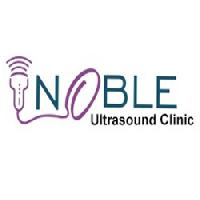Exploring the HSG Test for Female Fertility: Procedure, Preparation, and Benefits

Posted by nobleultrasound
from the Health category at
28 Mar 2024 10:22:16 am.
Issues with any of these can lead to difficulties in getting pregnant. Blocked fallopian tubes, for instance, can prevent sperm from reaching the egg or the fertilized egg from reaching the uterus. Various factors can cause blockages, but regardless of the cause, a diagnostic test called a hysterosalpingogram, or HSG test, is used to diagnose it.
What Is an HSG?
An HSG is a quick procedure that uses an X-ray to examine the uterus and fallopian tubes. Typically lasting less than 5 minutes, you can return home the same day.
The procedure is usually scheduled after your period but before ovulation, typically in the first half of your cycle, around days 1 to 14, when pregnancy is less likely.
Preparing for an HSG
Your doctor may recommend taking an over-the-counter pain reliever an hour before the procedure and possibly an antibiotic. They will discuss their specific recommendations with you beforehand.
You'll likely be able to drive yourself home afterward, but having a friend or family member with you might be a good idea in case you feel unwell.
Procedure Details
The test is performed by a gynecologist in their office or clinic. You'll lie on a table under a fluoroscope, an X-ray imager. A speculum is inserted into your vagina to keep it open, and your cervix is cleaned.
Next, a thin tube called a cannula is inserted into your cervix, and the speculum is removed. Your uterus is then filled with a liquid containing iodine, which shows up on X-rays, outlining your uterus and fallopian tubes.
X-ray images are taken as the liquid moves through your reproductive organs. Your doctor may ask you to change positions for different views, and you might experience some cramping. Once the images are captured, the cannula is removed.
After the Procedure
You may experience vaginal spotting for a few days. Cramping, dizziness, and stomach discomfort are also possible.
Potential Risks
While HSG is generally safe, there are risks, such as an allergic reaction to the dye or pelvic infection. Seek immediate medical attention if you experience symptoms like foul-smelling vaginal discharge, fainting, severe abdominal pain, vomiting, heavy vaginal bleeding, or fever.
Interpreting Results
A radiologist will review the X-ray images and send a report to your doctor. They will discuss the findings with you and determine if further tests are necessary.
If the report indicates blocked fallopian tubes, your doctor may recommend a laparoscopy or in vitro fertilization (IVF). They will explain your options and help you decide on the best course of action.
HSG Test Near Me
Noble Ultrasound, a well-established diagnostic center in Gurgaon, offers convenient access to hysterosalpingography (HSG) tests. Located in Sector 65, our HSG test in Gurgaon provides precise imaging of the uterus and fallopian tubes, aiding in the identification of potential fertility issues such as blockages or abnormalities. With a focus on professionalism and patient comfort, Noble Ultrasound ensures a seamless experience, from scheduling to post-procedure care. Our expert staff and state-of-the-art equipment guarantee accurate results, empowering individuals on their fertility journey.
0 Comments



